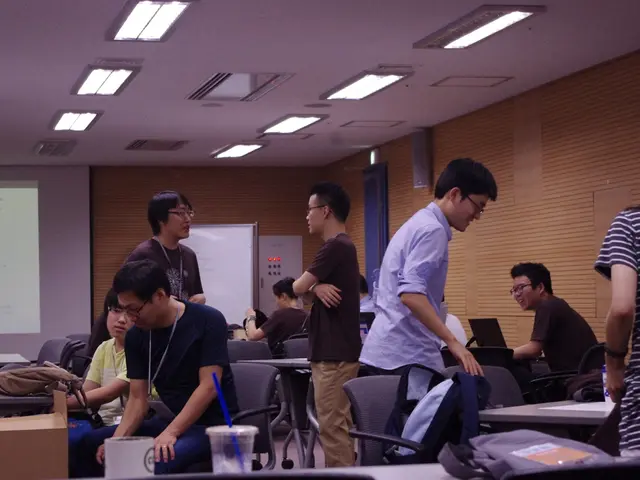Meltdowns in Individuals with Autism: Recognizing Symptoms & Coping Strategies
An Autistic Meltdown: A Neurological Response to Overwhelm
Autistic meltdowns, often misconstrued as tantrums or emotional outbursts, are in fact involuntary responses to intense sensory, emotional, social, or cognitive stress. These episodes are rooted in the deep neurological difficulty autistic individuals have in managing such stressors.
As one adult with autism shares, "Meltdowns aren't about attention-they're about desperately needing relief from overwhelming stress." This sentiment sheds light on the nature of these incidents, which are better understood as a cry for help rather than intentional misbehavior.
Understanding meltdowns as involuntary responses is crucial for empathy and effective management. Common triggers include sensory overload, unexpected changes in routine, social exhaustion, and emotional stress. Recognizing personal triggers can significantly reduce the frequency of meltdowns.
Managing sensory and emotional stress effectively requires planning ahead, creating calming routines, setting clear boundaries, advocating for personal needs, and maintaining physical health. During a meltdown, priority should be given to immediate comfort, such as removing oneself from triggers, utilizing grounding techniques, and allowing the experience to pass without judgment.
Post-meltdown recovery involves rest, gentle self-care, avoiding self-criticism, reflecting on triggers to prepare better coping strategies, and seeking support from understanding individuals or professionals.
An autistic meltdown occurs when an individual's nervous system is overwhelmed, resulting in a temporary loss of control over emotions or behaviors. Unlike tantrums, meltdowns are uncontrollable reactions to intense sensory, emotional, social, or cognitive overload. Psychologist Dr. Tony Attwood compares this reaction to a neurological "fight-or-flight response" triggered when autistic individuals reach their limit.
Meltdowns in adults may present differently from those in children-they may withdraw completely, become intensely emotional, or feel compelled to escape immediately. Common triggers for meltdowns include sensory overload, unexpected changes or disruptions in routines, social exhaustion, and emotional overwhelm. Early warning signs include increased irritability, repetitive movements or behaviors (stimming), and difficulty communicating.
Preventing and minimizing meltdowns involve identifying personal triggers, planning ahead and modifying the environment, building comforting routines and preparing for changes, practicing self-advocacy and setting boundaries, learning and rehearsing calming techniques, and taking care of physical needs.
During a meltdown, it is essential to remove oneself from overload triggers, use grounding and sensory tools, avoid fighting feelings, and utilize supportive people if available. Recovery involves allowing time to recover, soothing the body and mind, avoiding negative self-talk, reflecting and adjusting (when ready), reaching out for support, and educating oneself and others about meltdowns.
In offering support, friends, family, and employers can help with recovery and provide reassurance, educate themselves and respect individual needs, stay calm and non-judgmental during meltdowns, reduce external stimulation, communicate simply or remain quiet, and provide privacy when possible.
Sources:[1] Simone Sikora, M.S., CCC-SLP-“How to Help a Person with Autism When They're Having a Meltdown” – ASHA Leadership and Advocacy Position Paper, 2019.[2] Robb, J.J., & Legrand, L. (2004). Handbook for Parents and Teachers of the Autistic Child. Wiley.[3] Deschler, M. (2012). "Applied Behavior Analysis (ABA) and Autism." Autism Speaks. https://www.autismspeaks.org/applied-behavior-analysis.[4] National Autistic Society. (n.d.). Meltdowns and shutdowns: understanding them, avoiding them and coping when they happen. https://www.autism.org.uk/get-included/professionals/working-practice-guide/meltdowns-shutdowns/.[5] "ADHD & Autism: Accommodating Students." Wrightslaw. https://www.wrightslaw.com/info/adha.autism.md.htm.
- Autistic meltdowns, misunderstood as tantrums, are involuntary responses to intense stress on the nervous system due to sensory, emotional, social, or cognitive overload.
- Managing stress effectively involves planning ahead, creating calming routines, setting clear boundaries, advocating for personal needs, and maintaining physical health.
- During a meltdown, self-care includes removing oneself from triggers, utilizing grounding techniques, and allowing the experience to pass without judgment.
- Post-meltdown recovery involves rest, gentle self-care, avoiding self-criticism, reflecting on triggers to prepare better coping strategies, and seeking support from understanding individuals or professionals in the field of health-and-wellness, including psychology and mental health.
- Understanding meltdowns as involuntary responses is crucial for effective communication and empathy, as they are better understood as a cry for help rather than intentional misbehavior.
- Preventing and minimizing meltdowns involves identifying personal triggers, planning ahead and modifying the environment, building comforting routines and preparing for changes, practicing self-advocacy and setting boundaries, learning and rehearsing calming techniques, and taking care of physical needs.
- In offering support, it's important to educate oneself, respect individual needs, stay calm and non-judgmental, reduce external stimulation, communicate simply or remain quiet, and provide privacy when possible.








